Recently I attended an outdoor low light shooting class. The trainer, Andrew Blubaugh of Apex Shooting and Tactics, works with us and I’ve helped him with a few classes. This nuts-and-bolts, 3-hour class allowed me to experience and experiment with some new techniques using a handheld flashlight while shooting.
Sponsored by Springfield Armory, Inc.
A handheld flashlight is a great tool to add to your everyday carry routine. When used in unison with a pistol, it provides a great tactical advantage, because flashlights not only illuminate a threat, they also can be disorienting and blinding.
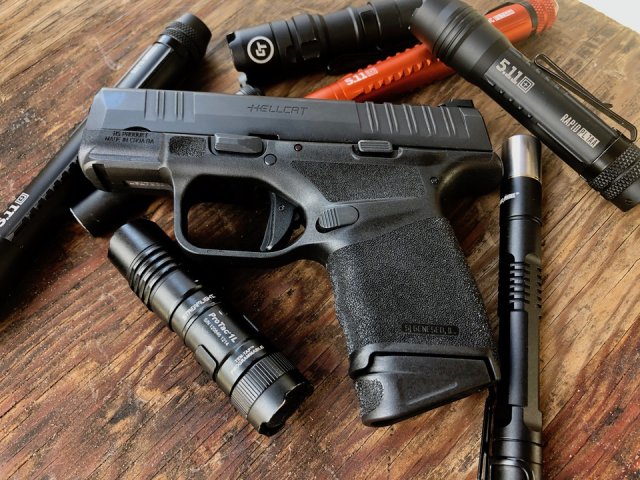
Since this was my first experience shooting low light, I brought along 3 different handheld flashlights. My goal for the class was to find the best low light shooting technique for me and also, to decide which flashlight I felt most confident using.
When researching the amount of lumens for an EDC flashlight, I found a variety of answers. Apparently, around 90 to 100 lumens is the minimum to negatively affect the human eye. It also offers enough illumination to see details, such as what a person is holding.
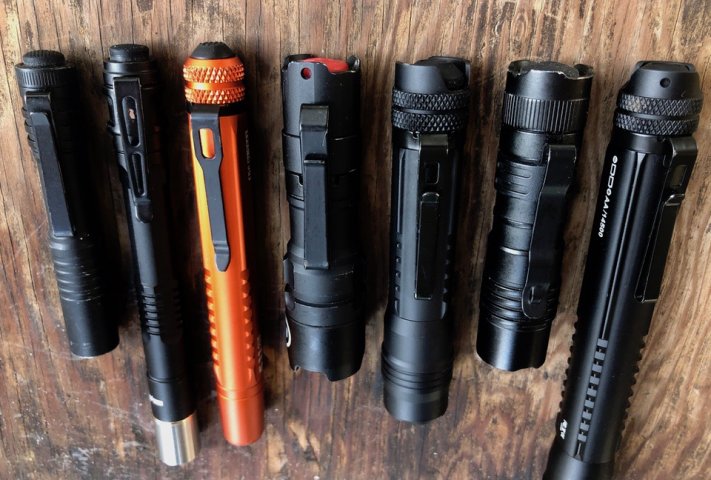
Another consideration when choosing a flashlight is the different modes many offer. The 5 most common I found include high, medium, low, strobe and SOS. Something to note: the brighter the mode, the shorter the runtime.
There are numerous 1-handed and 2-handed techniques for shooting with a handheld flashlight. Some common 1-handed techniques are Harries, FBI Technique, and neck (jaw) or temple index. When researching 2-handed shooting techniques, I found techniques often named after the persons who made them popular. The most well-known being the Surefire, Chapman, Ayoob and Rogers techniques. During this class, I experimented with temple and jaw indexing. My instructor, Andrew, suggested these methods because they’re not as contrived and don’t lend themselves to pointing the gun at your own hand or something else you don’t intend to shoot.
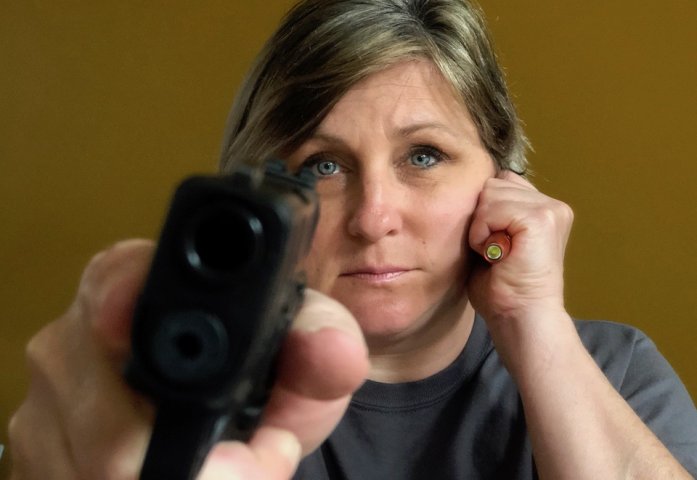
The following tips help when shooting with 1 hand:
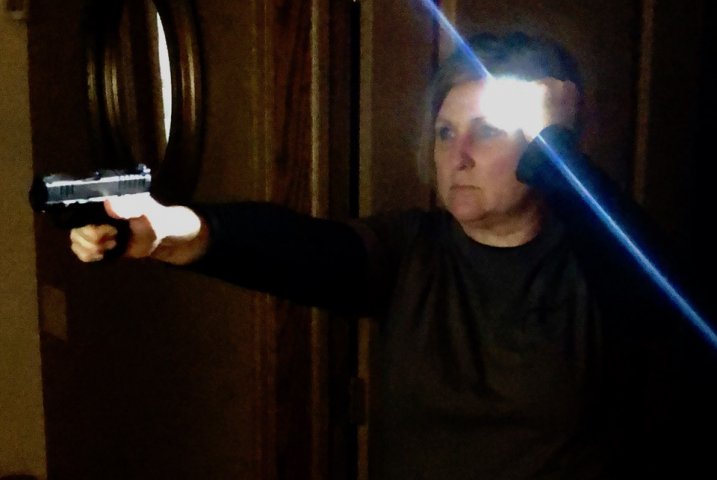
After experimenting with different sized flashlights, I decided to use a small, thin, longer design. I also like a raised pushbutton to turn it off and on. I can engage this type of button without fumbling, since I went to the class with the intention of finding the right method to confidently grip and operate a flashlight while operating a firearm at the same time.
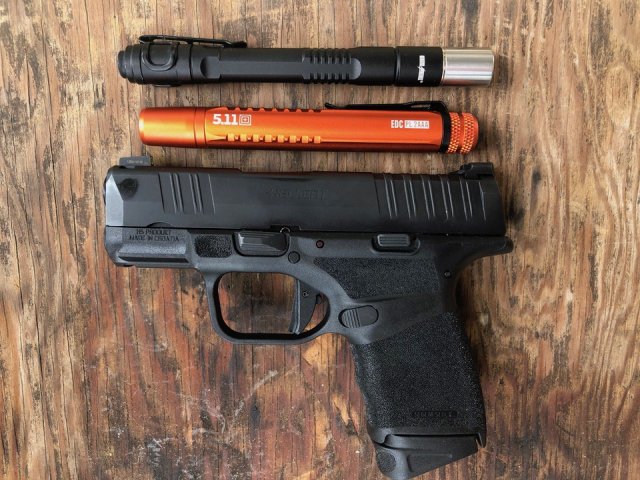
As for indexing the flashlight, holding it at my temple worked best for me. With this hold I could aim the beam where I wanted (which, in a self-defense situation, would be in the threat’s eyes) and keep light on or off my gun’s sights. I also prefer a flashlight with just 1 mode. I found myself accidentally putting on the strobe and low features when I really wanted the brighter light.
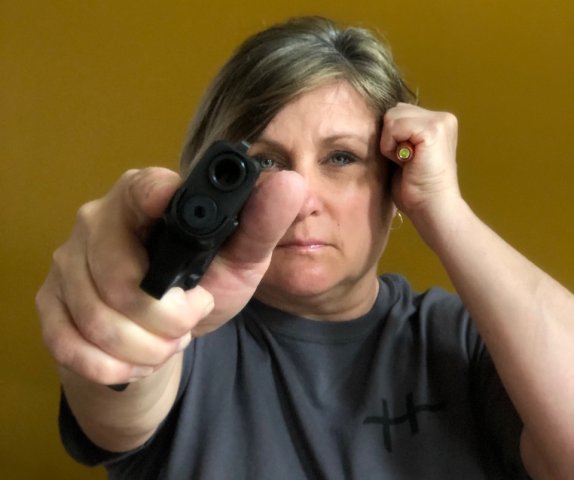
Please note, what I wrote above is what I determined worked best for me. I took the time to experiment with a few different low light shooting techniques, as well as various flashlights. As with other aspects of firearms training, it’s important to determine what works best for you. Also, once you choose a technique, you must practice, practice, then practice some more.
Michelle Cerino, aka Princess Gunslinger, first entered the firearms industry in 2011 as co-owner, president and trainer at a national training company. She immediately began competing in both 3-Gun and NRA Action Pistol, becoming a sponsored shooter. Michelle is currently a columnist and Managing Editor of Women’s Outdoor News, as well as owner of Pervenio LLC. She also manages social media for Vera Koo and FASTER Saves Lives. Michelle encourages others to step out of the comforts of home and explore. View all posts by Michelle Cerino
I don’t want a bad guy shooting at the only thing he can see…the illuminated bulb of my flashlight. Therefore, I don’t hold the flashlight right next to my head. I hold my non-dominant straight arm out from the shoulder, elbow bent upward at 90 degrees, with the beam of light on the same aim point of my guns muzzle. That makes about 3 feet of separation between the two with the flashlight slightly above the top of my head.
As I mentioned in the article, this is what I prefer and found worked for me.
Understood. I did not mean to sound contrary or disrespectful. However someone chooses to light up and identify a potential target is a good thing.
Cheers and good health.